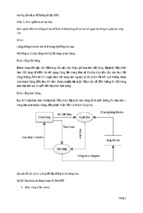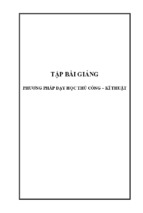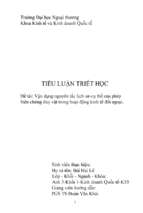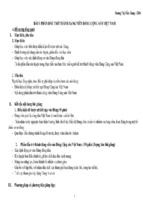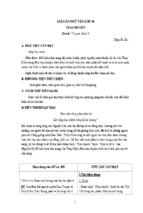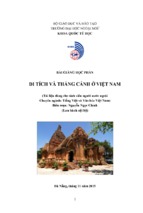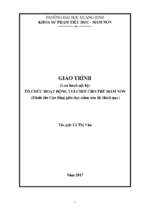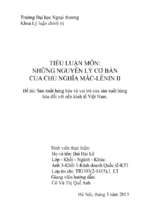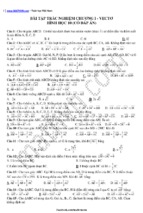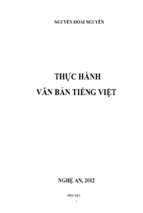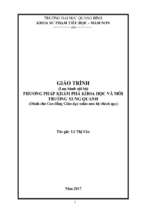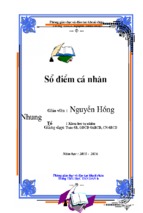WIPO
INTELLECTUAL PROPERTY
HANDBOOK
WIPO PUBLICATION
No. 489 (E)
ISBN 978-92-805-1291-5
WIPO 2004
Second Edition
Reprinted 2008
Detailed Table of Contents
Chapter 1
Introduction
The Concept of Intellectual Property
3
The World Intellectual Property Organization (WIPO)
4
History
Mission and Activities
Structure
Administration
Membership
Constitutional Reform
Wider Consultation and Outreach
4
5
7
8
9
9
12
Chapter 2
Fields of Intellectual Property Protection
Patents
17
Introduction
Conditions of Patentability
Drafting and Filing a Patent Application
Examination of a Patent Application
Infringement
Exploitation of the Patented Invention
Compulsory Licenses
Utility Models
17
17
22
24
27
33
34
40
ii
WIPO Intellectual Property Handbook: Policy, Law and Use
Copyright and Related Rights
40
Introduction
Copyright Protection
Subject Matter of Copyright Protection
Rights Comprised in Copyright
Related Rights
Ownership of Copyright
Limitations on Copyright Protection
Piracy and Infringement
Remedies
Intellectual Property and Traditional Cultural Expressions
Trends and Experiences in the Protection of TCEs
Conceptual and Policy Questions
Recent and Possible Future Developments
40
41
42
43
46
49
50
51
52
56
64
66
67
Trademarks
67
Introduction
Definitions
Signs Which May Serve as Trademarks
Criteria of Protectability
Protection of Trademark Rights
Use Requirements
Trademark Registration
Removal of the Trademark from the Register
Trademark Piracy, Counterfeiting and Imitation of Labels and Packaging
Change of Ownership
Trademark Licensing
Trade Names
Franchising
Character Merchandising
67
68
70
71
77
77
79
82
90
92
94
96
97
105
Industrial Designs and Integrated Circuits
112
Industrial Designs
Integrated Circuits
112
118
Geographical Indications
120
Introduction
Protection of Geographical Indications on the National Level
Protection of Geographical Indications on the International Level through
Multilateral Treaties
Protection of Geographical Indications on the International Level through
the Provisions of Bilateral Agreements
120
122
129
Protection Against Unfair Competition
130
Introduction
The Need for Protection
The Legal Basis for Protection
The Acts of Unfair Competition
130
132
133
136
124
Table of contents
iii
Chapter 3
The Role of Intellectual Property in Development and WIPO’s Development
Cooperation Program
Objectives of Developing Countries
163
Industrial Property and Development
164
Industrial Property Protection and Development
Inventions, Technology and Development
164
166
The Promotion of Innovation
168
Introduction
A Global Approach to Establishing Innovation and Invention Support
Structures or Services
Implementing and Managing Innovation and Invention Support
Structures and Services
Innovation Center or Innovation Support Network
168
Licensing and the Transfer of Technology
172
Introduction
The Commercial Transfer and Acquisition of Technology
Negotiation of Licensing Agreements
Remuneration
Types of Intellectual Property Licenses
Government Control of Licensing Agreements
172
172
178
184
188
193
Copyright and Development
195
The Development Cooperation Program of WIPO
196
Introduction
Objectives
Development Cooperation in Relation to Intellectual Property
The WIPO Worldwide Academy
196
196
197
202
169
170
170
Chapter 4
Enforcement of Intellectual Property Rights
Enforcement of Industrial Property Rights, Copyright and
Related Rights
207
Introduction
Enforcement of Industrial Property Rights in General
Enforcement of Patent Rights
Enforcement of Copyright and Related Rights
Activities Within WIPO Concerning Enforcement
Enforcement Provisions of the TRIPS Agreement
207
208
211
213
219
220
iv
WIPO Intellectual Property Handbook: Policy, Law and Use
Intellectual Property Litigation
220
Introduction
Review of Industrial Property Office Decisions
Infringement Actions
Remedies
220
220
225
228
Arbitration and Mediation of Intellectual Property Disputes
230
Alternative Dispute Resolution
Enforcement in the International Context
WIPO Arbitration and Mediation Center
WIPO Internet Domain Name Dispute Resolution
230
231
232
234
Chapter 5
International Treaties and Conventions on Intellectual Property
The Paris Convention for the Protection of Industrial Property
241
History
Principal Provisions
Administrative and Financial Provisions
241
242
259
The Berne Convention for the Protection of Literary and
Artistic Works
262
History
Principal Provisions
The Latest (Paris) Act of the Convention
Administration
Developing Countries and the Berne Convention
262
262
265
266
267
The WIPO Copyright Treaty (WCT)
269
Introduction
Legal Nature of the WCT and its Relationship with Other International
Treaties
Substantive Provisions of the WCT
Administrative Provisions
269
269
270
276
The Patent Cooperation Treaty (PCT)
276
Introduction
The Functioning of the PCT System
Advantages of the PCT System
276
278
282
v
Table of contents
The Budapest Treaty on the International Recognition of the Deposit
of Microorganisms for the Purposes of Patent Procedure
285
Background to the Treaty
Summary of the Treaty
Main Advantages of the Treaty
285
285
286
The Madrid Agreement Concerning the International Registration of
Marks and the Protocol Relating to the Madrid Agreement
287
Introduction
The Functioning of the System of International Registration
Becoming Party to the Agreement or Protocol
Advantages of the System
287
288
292
292
The Hague Agreement Concerning the International Deposit
of Industrial Designs
293
Introduction
The Principle of International Deposit
Main Provisions of the Hague Agreement
Benefits of Accession to the Hague Agreement
The Geneva Act of the Hague Agreement
293
293
293
295
296
The Trademark Law Treaty (TLT)
297
Introduction
Provisions of the Treaty and the Regulations
297
297
The Patent Law Treaty (PLT)
301
Introduction
Provisions of the Treaty and the Regulations
Advantages of the PLT
301
301
305
Treaties on Classification
305
Introduction
The Strasbourg Agreement Concerning the International Patent
Classification
The Nice Agreement Concerning the International Classification of Goods
and Services for the Purposes of the Registration of Marks
The Vienna Agreement Establishing an International Classification of
the Figurative Elements of Marks
The Locarno Agreement Establishing an International Classification
for Industrial Designs
305
305
308
311
313
Special Conventions in the Field of Related Rights: The International
Convention for the Protection of Performers, Producers of Phonograms
and Broadcasting Organizations (the “Rome Convention”)
314
Introduction
Relation Between the Protection of Related Rights and Copyright
Principal Provisions
314
315
316
vi
WIPO Intellectual Property Handbook: Policy, Law and Use
The Implementation of the Rome Convention
The Rome Convention and Developing Countries
319
319
Other Special Conventions in the Field of Related Rights
320
The Other Special Conventions
Reasons for and Purposes of the Special Conventions
Main Features of the Special Conventions
Substantive Provisions of the Phonograms Convention
Substantive Provisions of the Satellites Convention
The Phonograms and Satellites Conventions and Developing Countries
320
321
322
323
323
324
The WIPO Performance and Phonograms Treaty (WPPT)
325
Introduction
Legal Nature of the WPPT and its Relationship with Other International
Treaties
Substantive Provisions of the WPPT
Administrative Provisions
Audiovisual Performances
325
325
326
331
331
The International Convention for the Protection of New Varieties
of Plants
331
Introduction
The International Union for the Protection of New Varieties of Plants
(UPOV)
The 1991 Act of the UPOV Convention
Developments in Plant Variety Protection
331
332
335
345
The Agreement on Trade-Related Aspects of Intellectual Property Rights
(“TRIPS”) and WIPO-WTO Cooperation
345
Introduction
General Provisions, Basic Principles and Final Provisions (Parts I and VII)
Standards Concerning the Availability, Scope and Use of Intellectual
Property Rights (Part II)
Enforcement of Intellectual Property Rights (Part III)
Acquisition and Maintenance of Intellectual Property Rights and Related
Procedures (Part IV)
Dispute Prevention and Settlement (Part V)
Cooperation between the World Intellectual Property Organization and the
World Trade Organization
345
347
Progressive Development of International Intellectual Property Law
360
Introduction
The Joint Recommendation Concerning Provisions for the Protection of
Well-Known Marks
The Joint Recommendation Concerning Trademark Licenses
The Joint Recommendation Concerning the Protection of Marks, and Other
Industrial Property Rights in Signs, on the Internet
360
349
355
356
357
357
361
361
362
Table of contents
vii
Chapter 6
Administration and Teaching of Intellectual Property
Administration of Industrial Property
367
Introduction
Administrative Structure in the Industrial Property Office
The Patent Office
The Trademark Office
The Industrial Designs Office
Intergovernmental Cooperation
367
368
369
372
375
376
Administration Of Copyright and Related Rights
386
The Role of Public Authorities in Copyright and Related Rights
Collective Management of Copyright and Related Rights
386
387
The Patent and Trademark Attorney
401
Introduction
The Functions of a Patent Agent
Corporate Patent Attorneys
Associations of Patent Agents
The Functions of a Trademark Agent
Skills and Knowledge of a Patent Agent
401
401
411
413
415
420
The Teaching of Intellectual Property Law
421
Introduction
Intellectual Property Teaching Programs
Selecting Intellectual Property Courses
Choosing Teaching Materials and Writing a Syllabus
Teaching Methods and Educational Strategies
The Role of Teachers in the Legislative Process
Training and Research Institutes for Intellectual Property
Conclusion
421
422
425
426
428
429
430
431
Chapter 7
Technological and Legal Developments in Intellectual Property
Computer Programs
435
Introduction
Brief History of the Protection of Computer Programs
Protection of Computer Programs under Patents
Protection of Computer Programs under Copyright
International Norms Concerning Copyright Protection of Computer Programs
National Legislation on the Protection of Computer Programs
Creation and Use of Works by Means of Computers
Databases
435
436
436
436
437
437
439
441
viii
WIPO Intellectual Property Handbook: Policy, Law and Use
Biotechnology
442
Introduction
Adoption and Dissemination
Need for Protection
Existing Protection
Traditional Knowledge
442
443
444
445
446
Reprography
448
Reprography and Intellectual Property
Audio and Video Recording
448
449
Communication Technologies
450
Introduction
Satellites
Cable Distribution
Digital Distribution Systems
The Internet
Electronic Commerce
450
451
453
454
455
455
A Complementary Approach to the Development of Intellectual Property
Norms
457
WIPO Internet Domain Name Processes
WIPO’s Global Network
Standing Committees and Advisory Bodies
Bibliography
457
459
459
Chapter 1
INTRODUCTION
The Concept of Intellectual Property
The World Intellectual Property Organization (WIPO)
History
Mission and Activities
Structure
Administration
Membership
Constitutional Reform
Wider Consultation and Outreach
2
WIPO Intellectual Property Handbook: Policy, Law and Use
Chapter 1 - Introduction
3
The Concept of Intellectual Property
1.1
Intellectual property, very broadly, means the legal rights which result from intellectual
activity in the industrial, scientific, literary and artistic fields. Countries have laws to protect
intellectual property for two main reasons. One is to give statutory expression to the moral and
economic rights of creators in their creations and the rights of the public in access to those
creations. The second is to promote, as a deliberate act of Government policy, creativity and the
dissemination and application of its results and to encourage fair trading which would contribute to
economic and social development.
1.2
Generally speaking, intellectual property law aims at safeguarding creators and other
producers of intellectual goods and services by granting them certain time-limited rights to control
the use made of those productions. Those rights do not apply to the physical object in which the
creation may be embodied but instead to the intellectual creation as such. Intellectual property is
traditionally divided into two branches, “industrial property” and “copyright.”
1.3
The Convention Establishing the World Intellectual Property Organization (WIPO), concluded
in Stockholm on July 14, 1967 (Article 2(viii)) provides that “intellectual property shall include rights
relating to:
-
literary, artistic and scientific works,
performances of performing artists, phonograms and broadcasts,
inventions in all fields of human endeavor,
scientific discoveries,
industrial designs,
trademarks, service marks and commercial names and designations,
protection against unfair competition,
and all other rights resulting from intellectual activity in the industrial, scientific, literary or artistic
fields.”
1.4
The areas mentioned as literary, artistic and scientific works belong to the copyright branch
of intellectual property. The areas mentioned as performances of performing artists, phonograms
and broadcasts are usually called “related rights,” that is, rights related to copyright. The areas
mentioned as inventions, industrial designs, trademarks, service marks and commercial names and
designations constitute the industrial property branch of intellectual property. The area mentioned
as protection against unfair competition may also be considered as belonging to that branch, the
more so as Article 1(2) of the Paris Convention for the Protection of Industrial Property (Stockholm
Act of 1967) (the “Paris Convention”) includes “the repression of unfair competition” among the
areas of “the protection of industrial property”; the said Convention states that “any act of
competition contrary to honest practices in industrial and commercial matters constitutes
an act of unfair competition” (Article 10bis(2)).
1.5
The expression “industrial property” covers inventions and industrial designs. Simply stated,
inventions are new solutions to technical problems and industrial designs are aesthetic creations
determining the appearance of industrial products. In addition, industrial property includes
trademarks, service marks, commercial names and designations, including indications of source and
appellations of origin, and protection against unfair competition. Here, the aspect of intellectual
creations—although existent—is less prominent, but what counts here is that the object of
4
WIPO Intellectual Property Handbook: Policy, Law and Use
industrial property typically consists of signs transmitting information to consumers, in particular as
regards products and services offered on the market, and that the protection is directed against
unauthorized use of such signs which is likely to mislead consumers, and misleading practices in
general.
1.6
Scientific discoveries, the remaining area mentioned in the WIPO Convention, are not the
same as inventions. The Geneva Treaty on the International Recording of Scientific Discoveries
(1978) defines a scientific discovery as “the recognition of phenomena, properties or laws of the
material universe not hitherto recognized and capable of verification” (Article 1(1)(i)). Inventions are
new solutions to specific technical problems. Such solutions must, naturally, rely on the properties
or laws of the material universe (otherwise they could not be materially or “technically” applied),
but those properties or laws need not be properties or laws “not hitherto recognized.” An
invention puts to new use, to new technical use, the said properties or laws, whether they are
recognized (“discovered”) simultaneously with the making of the invention or whether they were
already recognized (“discovered”) before, and independently of, the invention.
The World Intellectual Property Organization (WIPO)
History
1.7
The World Intellectual Property Organization (WIPO) is one of the specialized agencies of the
United Nations (UN) system of organizations. The “Convention Establishing the World Intellectual
Property Organization” was signed at Stockholm in 1967 and entered into force in 1970. However,
the origins of WIPO go back to 1883 and 1886, with the adoption of the Paris Convention and the
Berne Convention respectively. Both of these conventions provided for the establishment of
international secretariats, and both were placed under the supervision of the Swiss Federal
Government. The few officials who were needed to carry out the administration of the two
conventions were located in Berne, Switzerland.
1.8
Initially there were two secretariats (one for industrial property, one for copyright) for the
administration of the two conventions, but in 1893 the two secretariats united. The most recent
name of the organization, before it became WIPO, was BIRPI, the acronym of the French-language
version of the name: United International Bureaux for the Protection of Intellectual Property (in
English). In 1960, BIRPI moved from Berne to Geneva.
1.9
At the 1967 diplomatic conference in Stockholm, when WIPO was established, the
administrative and final clauses of all the then existing multilateral treaties administered by BIRPI
were revised. They had to be revised because member States wished to assume the position of full
governing body of the Organization (WIPO), thus removing the supervisory authority of the Swiss
Government, to give WIPO the same status as all the other comparable intergovernmental
organizations and to pave the way for it to become a specialized agency of the United Nations
system of organizations.
1.10 Most of the intergovernmental organizations now called specialized agencies did not exist
before the Second World War. They were created for the specific purpose of dealing with a
particular subject or field of activity at the international level. However, some intergovernmental
organizations, such as the International Labor Office (ILO), the Universal Postal Union (UPU) and the
International Telecommunication Union (ITU) were in existence, and had become the responsible
intergovernmental organizations in their respective fields of activity long before the establishment of
Chapter 1 - Introduction
5
the United Nations. After the United Nations was established, these organizations became
specialized agencies of the United Nations system.
1.11 Similarly, long before the United Nations was established, BIRPI was the responsible
intergovernmental organization in the field of intellectual property. WIPO, the successor to BIRPI,
became a specialized agency of the United Nations when an agreement was signed to that end
between the United Nations and WIPO which came into effect on December 17, 1974.
1.12 A specialized agency, although it belongs to the family of United Nations organizations,
retains its independence. Each specialized agency has its own membership. All member States of
the United Nations are entitled to become members of all the specialized agencies, but in fact not
all member States of the United Nations are members of all the specialized agencies. Each State
decides for itself whether it wants, or does not want, to become a member of any particular
specialized agency. Each specialized agency has its own constitution, its own governing bodies, its
own elected executive head, its own income, its own budget, its own staff, its own programs and
activities. Machinery exists for coordinating the activities of all the specialized agencies, among
themselves and with the United Nations, but basically each agency remains responsible, under its
own constitution, to its own governing bodies, which are the States members of the organization.
1.13 The agreement between the United Nations and WIPO recognizes that WIPO is, subject to
the competence of the United Nations and its organs, responsible for taking appropriate action in
accordance with its basic instrument and the treaties and agreements administered by it, inter alia,
for promoting creative intellectual activity and for facilitating the transfer of technology related to
industrial property to developing countries in order to accelerate economic, social and cultural
development.
Mission and Activities
1.14 The mission of WIPO is to promote through international cooperation the creation,
dissemination, use and protection of works of the human mind for the economic, cultural and social
progress of all mankind. Its effect is to contribute to a balance between the stimulation of creativity
worldwide, by sufficiently protecting the moral and material interests of creators on the one hand,
and providing access to the socio-economic and cultural benefits of such creativity worldwide on
the other.
1.15 WIPO’s place on the international scene has greatly changed since its beginnings, when it
was created to serve as the secretariat of treaties concluded between States. Although WIPO has
maintained this function (it currently administers 23 such treaties), together with the consequential
one of promoting intergovernmental cooperation in the administration of intellectual property, its
activities have not only expanded, but also greatly diversified.
1.16 An outstanding example of the expansion of WIPO’s earlier work is the growth of its
registration activities—that is to say, the increase in the use of international treaties that create the
facility of a single procedure to apply for patents and register trademarks and industrial designs,
valid in up to all States party to those treaties. The Patent Cooperation Treaty (PCT), the Madrid
Agreement and Protocol Concerning the International Registration of Marks, and the Hague
Agreement Concerning the International Deposit of Industrial Designs have all given rise to an
increased volume of registration activities. To strengthen this aspect of WIPO’s work, a new
international treaty, namely, the Patent Law Treaty, came into existence in June 2000: its purpose is
6
WIPO Intellectual Property Handbook: Policy, Law and Use
to streamline application procedures and to reduce the cost of obtaining simultaneous patent
protection in several countries.
1.17 In its more recent history, WIPO increasingly does not stop short of promoting all kinds of
intellectual property. This is only the means to achieve an end, which is to promote human
creativity that results in industrial and cultural products and services enriching human society as a
whole. Thus WIPO is increasingly involved in helping developing countries, whose creativity has yet
to be adequately harnessed, to receive the full benefits of the creations of their citizens, as well as
those of the outside world. WIPO’s role is to assist them also in the preparation and enforcement
of laws, in the establishment of sound institutions and administrative structures and in the training
of appropriate personnel. WIPO has given particular attention to the 49 Least Developed Countries
(LDCs), as will be seen in chapter 3, and has also given similar assistance to countries whose
economies are in transition, in Central Asia, Central and Eastern Europe and the Baltic region.
1.18 WIPO’s cooperation for development program is closely interwoven with governmental and
intergovernmental cooperation, including WIPO’s agreement with the World Trade Organization
(WTO), whereby WIPO assists developing countries in the implementation of WTO’s Agreement on
Trade-Related Aspects of Intellectual Property Rights (TRIPS) (see chapter 5).
1.19 The problem of development is compounded by rapid technological and scientific progress.
WIPO’s approach is twofold: it is to identify and to promote international solutions to the legal and
administrative problems posed by digital technology, especially the Internet, to the traditional
notions and practices of intellectual property.
1.20 WIPO’s work in alternative dispute resolution between individuals and companies, through
the WIPO Arbitration and Mediation Center (see chapter 4) has been extended to cover the
problems arising from the misuse of domain names on the Internet. WIPO has been accredited by
the Internet Corporation for Assigned Names and Numbers (ICANN) to administer cases filed under
ICANN’s Uniform Domain Name Dispute Resolution Policy. Disputes are handled and resolved
online, enabling parties to settle cases in a time- and cost-effective manner, without being physically
present in the same place.
1.21 A project that will greatly advance the sharing of valuable intellectual property information
benefits is the worldwide global intellectual property information network (WIPONET), a project
launched by WIPO in 1999. WIPONET is designed to establish a secure, global network linking the
intellectual property offices of all WIPO’s Member States, facilitating access to and exchange of
information worldwide. Already WIPO’s main and subsidiary websites are heavily used all over the
world.
1.22 WIPO is increasingly adopting a global approach not only to intellectual property in itself,
but to the place of intellectual property in the wider framework of emerging issues such as
traditional knowledge, folklore, biological diversity, environmental protection and human rights.
These issues are explored in chapter 2 and chapter 7. WIPO has followed the method of
consultation and empirical research to find, for example, the relation between intellectual property
and genetic resources, traditional knowledge and folklore.
1.23 One of the most significant present-day tasks of WIPO is to demystify intellectual property,
so that it is recognized as a part of everyday life not only by those directly involved in it at
governmental, legal, industrial and cultural levels, but also by any others who compose civil society,
whether in non-governmental organizations or small businesses, whether farmers, public health
personnel, individual creators or simply interested members of the general public. Realizing the
importance of small- and medium-sized enterprises (SMEs) as the backbone of market economies,
Chapter 1 - Introduction
7
WIPO has established a program aimed at helping them to fulfill their potential as a powerful force
behind wealth creation.
1.24 WIPO’s agenda of outreach to all members of society is through their inclusion as
stakeholders and partners in global and national intellectual property systems. To ensure that such
inclusion is of benefit to the parties concerned, WIPO pursues a policy of empowerment. This
means that WIPO’s activities aim to give to all levels of society an awareness of how they have a
stake in a healthy intellectual property system, and also to provide them with access to the
knowledge, experience and expertise that will enable them to use those systems effectively.
Structure
1.25 The constitution, the “basic instrument,” of WIPO is the Convention signed at Stockholm in
1967. In describing WIPO, the following questions will be answered in very general terms: why is
an intergovernmental organization needed? What are the Unions administered by WIPO? Which
States are members of WIPO? What does WIPO do? How is it governed and managed?
1.26 The General Assembly consists of all the States that are members of WIPO and also
members of any of the Unions.
1.27 Unlike the General Assembly, the Conference consists of all the States which are members
of WIPO, whether or not they are members of any of the Unions. The main functions of the
Conference were originally divided into five groups. First, the Conference was to constitute a forum
for exchanges of views between all States members of WIPO on matters relating to intellectual
property, and in that context it was empowered, in particular, to make any recommendations on
such matters, having regard to the competence and autonomy of the Unions. Secondly, the
Conference was to establish the biennial development cooperation program for developing
countries and, thirdly, it was to adopt a budget for that purpose. Fourthly, the Conference is also
competent to adopt amendments to the Convention establishing WIPO. Proposals for the
amendment of the Convention may be initiated by any State member of WIPO, by the Coordination
Committee or by the Director General. Fifthly, the Conference, like the General Assembly, was to
determine which States and organizations would be admitted to its meetings as observers.
1.28 Why is an intergovernmental intellectual property organization needed? Intellectual
property rights are limited territorially; they exist and can be exercised only within the jurisdiction of
the country or countries under whose laws they are granted. But works of the mind, including
inventive ideas, do and should cross frontiers with ease in a world of interdependent nations.
Moreover, with growing similarity in the approach and procedures governing intellectual property
matters in various countries, it makes eminent sense to simplify practice through international
standardization and mutual recognition of rights and duties among nations.
Therefore,
governments have negotiated and adopted multilateral treaties in the various fields of intellectual
property, each of which establishes a “Union” of countries which agree to grant to nationals of
other countries of the Union the same protection as they grant to their own, as well as to follow
certain common rules, standards and practices.
1.29 The Unions administered by WIPO are founded on the treaties. A Union consists of all the
States that are party to a particular treaty. The name of the Union is, in most cases, taken from the
place where the text of the treaty was first adopted (thus the Paris Union, the Berne Union, etc.).
The treaties fall into three groups.
8
WIPO Intellectual Property Handbook: Policy, Law and Use
1.30 The first group of treaties establishes international protection, that is to say, they are treaties
which are the source of legal protection agreed between countries at the international level. For
instance, three treaties on industrial property fall into this group—the Paris Convention, the Madrid
Agreement for the Repression of False and Deceptive Indications of Source on Goods and the
Lisbon Agreement for the Protection of Appellations of Origin and their International Registration.
1.31 The second group consists of treaties which facilitate international protection. For instance,
six treaties on industrial property fall into this group. They are the Patent Cooperation Treaty, which
provides for the filing of international applications for patents, the Madrid Agreement Concerning
the International Registration of Marks, the Lisbon Agreement, which has already been mentioned
because it belongs to both the first and second groups, the Budapest Treaty on the International
Recognition of the Deposit of Microorganisms for the Purposes of Patent Procedure and the Hague
Agreement Concerning the International Deposit of Industrial Designs.
1.32 The third group consists of treaties which establish classification systems and procedures for
improving them and keeping them up to date. Four treaties, all dealing with industrial property, fall
into this group. They are the International Patent Classification Agreement (IPC), the Nice
Agreement Concerning the International Classification of Goods and Services for the Purposes of
the Registration of Marks, the Vienna Agreement Establishing an International Classification of the
Figurative Elements of Marks and the Locarno Agreement Establishing an International Classification
for Industrial Designs.
1.33 Revising these treaties and establishing new ones are tasks which require a constant effort
of international cooperation and negotiation, supported by a specialized secretariat. WIPO provides
the framework and the services for this work.
Administration
1.34 The Convention establishing WIPO provides for four different organs: the General
Assembly, the Conference, the Coordination Committee and the International Bureau of WIPO or
Secretariat.
1.35 The General Assembly is the supreme organ of WIPO. Among its other powers and
functions, the General Assembly appoints the Director General upon nomination by the
Coordination Committee; it reviews and approves the reports and activities of the Coordination
Committee as well as the reports of the Director General concerning WIPO; it adopts the financial
regulations of WIPO and the biennial budget of expenses common to the Unions; it approves the
measures proposed by the Director General concerning the administration of the international
agreements designed to promote the protection of intellectual property; it determines the working
languages of the Secretariat, taking into consideration the practice of the United Nations; and it
also determines which States not members of WIPO and which intergovernmental and international
non-governmental organizations shall be admitted to its meetings as observers.
1.36 The fourth organ of WIPO is the International Bureau of WIPO or Secretariat. It is headed by
the Director General, and further consists of those who make up its regular staff; the staff in the
professional and higher categories are recruited on a principle of equitable geographical distribution
established in the United Nations system, and other staff are from a wide range of countries in all
regions of the world.
Chapter 1 - Introduction
9
Membership
1.37 The Convention establishing WIPO declares that membership shall be open to any State that
is a member of any of the Unions, and to any State which is not a member of any of the Unions,
provided that it is a member of the United Nations, of any of the specialized agencies of the United
Nations or of the International Atomic Energy Agency, or is party to the Statute of the International
Court of Justice or is invited by the General Assembly of WIPO to become a member. Thus only
States can be members of WIPO.
1.38 To become a member, a State must deposit an instrument of ratification or accession with
the Director General of WIPO at Geneva. States party to the Paris or Berne Conventions may
become members of WIPO only if they are already bound by, or concurrently ratify or accede to, at
least the administrative provisions of the Stockholm (1967) Act of the Paris Convention or of the
Paris (1971) Act of the Berne Convention.
1.39 The States party to the Convention Establishing the World Intellectual Property Organization
(WIPO) are listed in the appropriate document to be found inserted in the back flap of this volume.
Constitutional Reform
1.40 The Member States of WIPO have, in recent years, adopted or considered a series of policies
which ultimately require, for their implementation, amendment of the WIPO Convention and at
least certain of the other treaties administered by WIPO.
1.41 The first such policy relates to the unitary contribution system and changes in contribution
classes. In 1993 the WIPO Conference and the Assemblies of the Paris and Berne Unions adopted
the unitary contribution system in replacement of the multiple contribution system provided for in
the WIPO Convention and the treaties administered by WIPO. Under the unitary contribution
system a State party to any of WIPO’s contribution treaties would pay a single contribution,
regardless of the number of such treaties to which it was party. It was adopted on a provisional
and experimental basis, pending an evaluation of the outcome, and possibly subsequently the
amendment of the relevant provisions of the WIPO Convention and the treaties administered by
WIPO that provide for the payment of contributions by Contracting States. In 1989, 1991 and
1993, the same organs also adopted new contribution classes on the same provisional basis,
pending the amendment of the requisite treaties to bring the provisions of those treaties into line
with the new classes.
1.42 A second such policy arises out of the work of the Working Group on Policies and Practices
for the Nomination and Appointment of Directors General, which was established by the WIPO
Coordination Committee in 1988. Acting upon the recommendations of the Working Group, the
WIPO Coordination Committee and the WIPO General Assembly, the Assemblies of the Paris and
Berne Unions and the WIPO Conference adopted a proposal to amend Article 9(3) of the
Convention Establishing the World Intellectual Property Organization, limiting to 12 years a Director
General’s total period in office.
1.43 The third series of policies arises out of the adoption of the 1998-99 Program and Budget.
That Program and Budget contained various proposals for the simplification and rationalization of
the governance structure of WIPO. The proposals for simplification and rationalization relate to
10
WIPO Intellectual Property Handbook: Policy, Law and Use
committees constituted directly by the Assemblies of the Member States; there are, however, other
similar proposals in respect of organs or bodies constituted by WIPO-administered treaties.
1.44 Given that it appeared necessary to set in motion the procedure for treaty amendment
because of the new practices relating to the unitary contribution system and contribution classes
and the policy on limitation of mandates of Directors General, the WIPO Secretariat used the
opportunity to propose other options for change in the governance structure of WIPO.
1.45 The culmination of proposals by the Secretariat and the adoption by the Member States of
the policies described above was the creation of a Working Group on Constitutional Reform. The
Working Group, which was open to all Member States of WIPO and also to the Member States of
the Paris and Berne Unions, was established by the WIPO General Assembly at its meeting in
September 1999. The Working Group met on six occasions in the space of three years, twice
in 2000, 2001 and 2002 respectively. Its final recommendations were submitted to, and adopted
by, the Assemblies of Member States of WIPO in September 2002.
1.46 The various proposals on constitutional reform which were studied by the Working Group
may be described under five topics:
Unitary contribution system and changes in contribution classes
1.47 The first set of proposals on constitutional reform is to amend the relevant WIPOadministered treaties in order to formalize the unitary contribution system adopted in 1993 and the
new contribution classes adopted in 1989, 1991 and 1993.
Executive Committees of the Paris Union, the Berne Union and the PCT Union
1.48 The reasons for the establishment of the Executive Committees of the Paris, Berne and PCT
Unions seem to have been the perceived need for a body of a lesser number of member States than
the Assembly in order to consider matters that were urgent in nature, and therefore could not await
the next ordinary session of the Assembly, or were of lesser importance and did not require
attention by the Assembly.
1.49 In practice, the Executive Committees have never functioned as intended. The PCT
Executive Committee was never actually constituted; and neither the Paris nor the Berne Executive
Committee has ever considered, as a body meeting separately, a substantive item of business.
1.50 The second set of proposals on constitutional reform is therefore to amend the WIPO
Convention, the Paris Convention, the Berne Convention and the PCT by abolishing the Executive
Committees of the Paris, Berne and PCT Unions.
WIPO Conference
1.51 The WIPO Conference is composed of all the Member States of WIPO. In practice, the
Conference never meets separately from the General Assembly. It meets during the same period
and in the same room as the General Assembly, and the only ostensible difference in the
proceedings is the difference in presiding officer. In practice also, the Conference has considered
very few separate items of business. In reality the functional division of work originally envisaged
between the General Assembly and the Conference did not occur.
1.52 The third set of proposals on constitutional reform is to amend the WIPO Convention in
order to abolish the WIPO Conference.
- Xem thêm -


